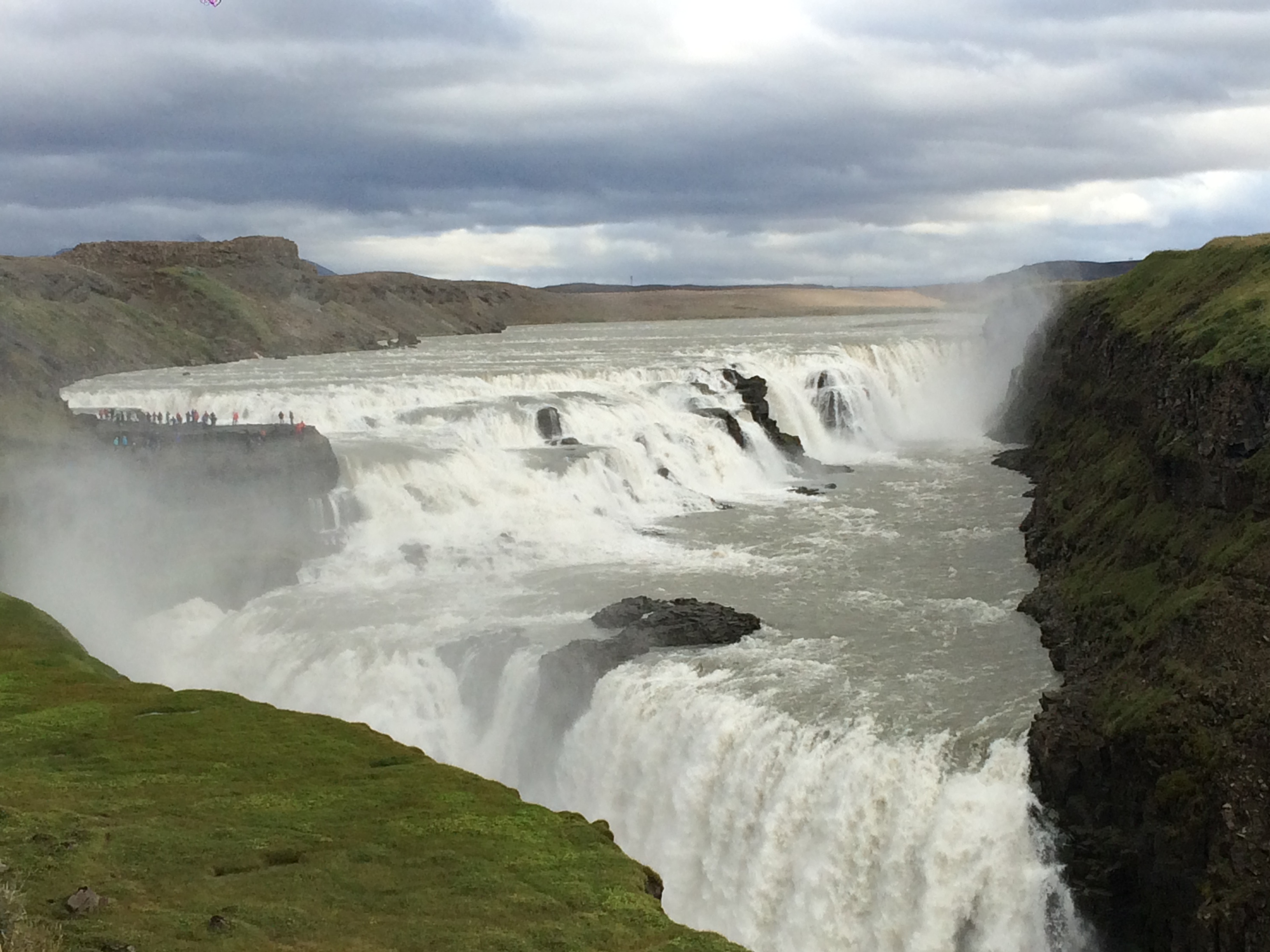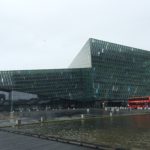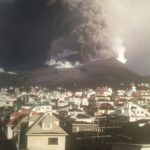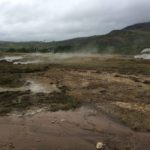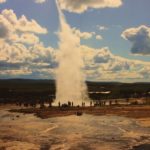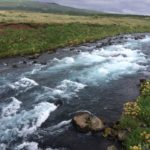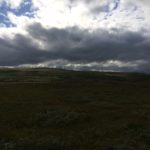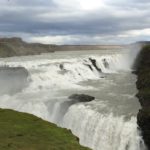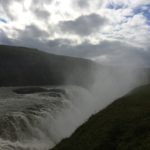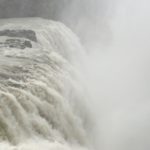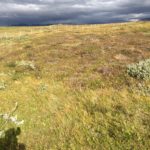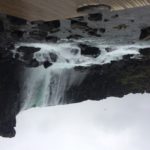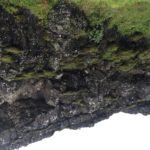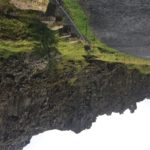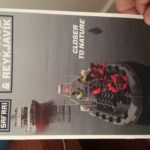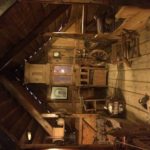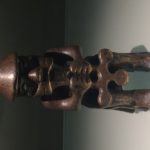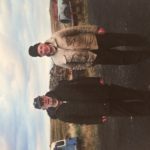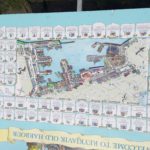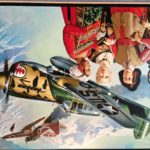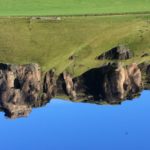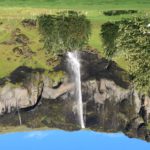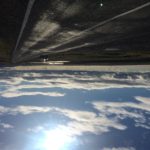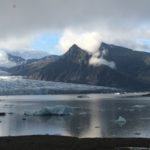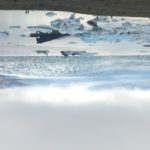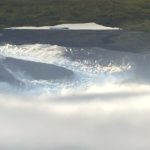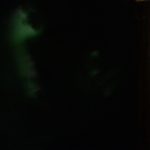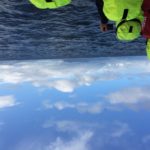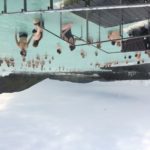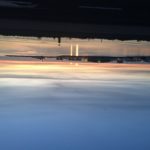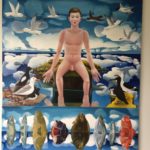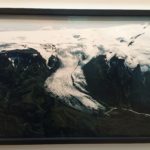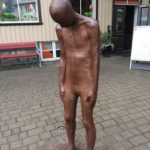Reykjavik
If you’re staying out of town (I was in an AirBnB in Hafnarfjördur about half an hour away), the bus network is efficient and pretty cheap. If you have a car, prices for parking in the city aren’t that expensive but typically only take coins and don’t always tell you how much you have to pay, so do enquire beforehand. The wonderful thing about Reykjavik is that you can see it on foot in a morning, even allowing for hills, though most of the city is reasonably easy to manouvre.
- Hallgrimskirkja: the biggest hill takes you to this very unique church with a unique and somewhat phallic appearance. It contains a lot of art you certainly wouldn’t expect to see in a church over here.
- The harbour area: this is well worth spending some time to explore. At one end is the new Harpa concert hall, with its very distinctive architecture. From there you can cross the road, turn right and walk down to the old town and where fishing vessels are moored. Around there you’ll find many restaurants and offers of boat trips. The two I did were a northern lights tour and a whale hunt on a rib – great fun but you’ll feel it with a few aching muscles afterwards!
- Shopping: apart from the usual assortment of souvenirs, the Icelanders sell a lot of woollen products, some of which you might need if the weather turns cold. If you’re cooking for yourself there are markets and food shops around, which are mostly more expensive than the UK but definitely work trying – particularly if you like dried fish.
- Museums: I went to several, including the national museum, the culture museum and the settlement museum – but probably best to give the penis museum a miss! They are big on Iceland’s heritage and saga tradition. The culture museum has an amazing display of ancient illuminated manuscripts, including some of the oldest in the world.
- Art galleries: Reykjavik has an amazing assortment of great galleries, some of which demonstrate the strangeness of local art developments (eg. The display of large sculptures made from frosted teddy bears was notably creepy!) I went to several of these galleries, but you’ll find more too.
- Architecture: the city belongs to the Nordic tradition and has some amazing older buildings, quite apart from the dazzling new buildings like Harpa.
- Food: See here. Great if you like incredible fresh fish, smoked lamb and lamb soup. Whether you try fermented shark, horse and whale is up to you!
- People: worth going to a bar and getting talking to a few locals. They are just slightly eccentric, sometimes crazy, but they have a wonderful outlook on life, a great sense of humour and lots of great ideas of places to go. They also all speak English, which is just as well since nobody other than Icelanders speak their native language.
Out of town trips
First thing to note is that hiring a car is essential, a SUV/4WD highly preferable, and a satnav very helpful, despite the fact that you basically have one road that goes around the entire island. The only real problem you’ll have is bad weather, particularly at night. On the Atlantic coast I hit a hail storm that started and stopped very rapidly but made driving very difficult while it lasted. Hiring vehicles is easy around Keflavik airport.
There are lots more places to visit, particularly if you want to hike inland, climb volcanos and find more of the wild nature of Iceland – of which there is much to see. However, these are a few visits definitely worth making (See my full account about Vatnajoküll and the Northern Lights here):
- Northern lights: you have to see the Aurora Borealis, but the trouble is that there are never any guarantees since atmospheric conditions vary and the lights have their whims. I saw it quite by chance after coming out from a restaurant on the Atlantic coast, then hurriedly stopped the car and took as many pictures as I could. However, the northern lights cruise from Reykjavik proved fruitless. Go out at night and keep your eyes peeled!
- Blue Lagoon: not far from the airport is the Blue Lagoon, a man made spa using the water byproduct of the neighbouring thermal energy plant and one of Iceland’s primary visitor attractions. It’s not cheap but is an amazing experience no visitor to Iceland should miss. The restaurant is also incredible, but you can also go to the cafe to save money. You can also get massages and a range of spa treatments.
- Golden Circle: all tours of Iceland take you on the three legs of the golden circle, which is most certainly worth a visit. It’s less than a day’s tour, but start early and take advantage of rest stops – there are not too many en route. I drove and made it to Geysir first (spectacular hot springs, though you may have to wait a while to see the biggest eruption from Strokkur geyser), Gullfoss falls next (the most spectacular of the three – not the biggest falls in the world but a crescendo of falling water in a series of steps), and Thingvellir (the site of the first parliament in the world and, in the words of my guidebook, is a “riot of geology”) last, but coach tours tend to do Thingvellir first.
- Vatnajoküll: the biggest glacier in Europe, covering 13% of the Icelandic land mass, Vatnajoküll was quite a long drive around the south side of the island, past farming land, ravines, raging torrents, waterfalls, black volcanic landscapes, charming towns and villages and more besides. Showing nature at its most majestic I found it breathtaking in size, scale and sheer beauty. I’ve seen nothing to rival the glacier in Europe. Follow the link above to my full description.

